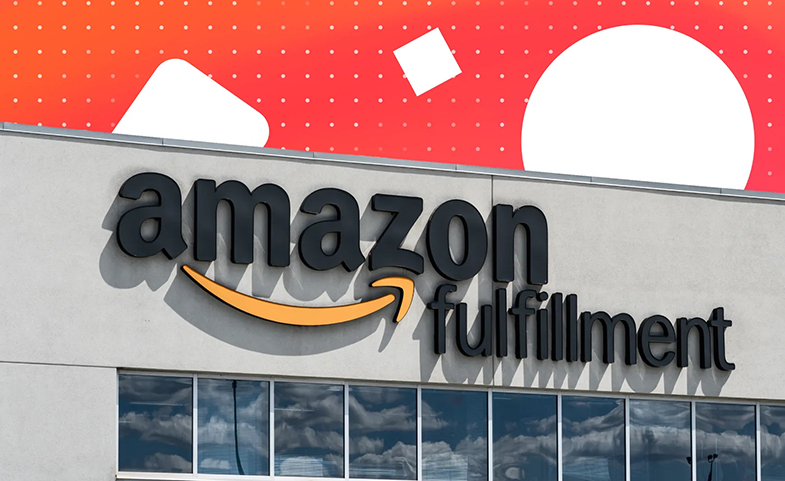Introduction:
For FBA (Fulfillment by Amazon) sellers, success hinges on a sophisticated logistical ballet performed within the walls of Amazon Fulfillment Centers. Understanding how these centers operate is crucial for sellers looking to optimize their processes and deliver a seamless experience to customers.
What is a fulfillment center?
A fulfillment center is a shipping warehouse or distribution location that handles fulfillment processes such as receiving and storing inventory, managing stock, picking and packaging orders, and sending products to customers. Some ecommerce fulfillment centers provide inventory management as well as customer service and process returns.
Amazon fulfillment centers can provide all these services as well as allow you to track inventory and monitor stock levels. To leverage Amazon’s global capacities for storage and delivery, enroll products in Fulfillment by Amazon.
Why is fulfillment important?
The right order fulfillment service can give you a competitive edge by helping you:
- Store products and track inventory
- Package and label orders
- Manage customer relations
- Send shipments on time and provide tracking information
- Obtain current information on stock levels
- Attract customers with fast, cost-effective shipping
- Take care of product returns and exchanges
How do fulfillment centers work?
When a customer places an order, the fulfillment center can optimize delivery by storing inventory closer to the customer. An ecommerce fulfillment center typically provides some or all of these services:
- Receiving inventory
- Storing products and managing stock levels
- Picking and packaging products
- Shipping orders
- Processing returns
Some fulfillment centers also handle customer notifications and provide tracking information for packages. You can monitor sales metrics and stats with an Amazon store. To tap into Amazon’s international fulfillment networks, sign up for Fulfillment by Amazon.
What types of businesses should invest in fulfillment?
If your business is all about delivering products to customers, paying attention to fulfillment is key. While doing it yourself might save money initially, there are signs that it's time to think about extra space or getting help:
More Orders Rolling In:
- If your business is growing and you're struggling to keep up with orders, that's a signal. It could be a good idea to look into ways to make handling all those orders easier.
Not Enough Setup for Inventory:
- If you're running out of space to store and organize your products between getting more stock and sending it out, that's a challenge. Having a plan for where to put things can make a big difference.
Fulfillment Costs Taking a Toll:
- If the time and money you're putting into getting products to customers are hurting your profits, it's worth noticing. Finding a smarter way to do things, like using a service such as FBA, could be a solution. This way, you can focus more on making your business better overall.
How does FBA work?
- With a Professional seller account, you’re able to use FBA. If you decide to use it with some or all of your eligible products, you’ll send inventory to Amazon fulfillment centers.
- Once in our fulfillment centers, we will take care of each step in the fulfillment process: shipping, customer service, and processing refunds, and returns for those products.
- You can track your FBA inventory in Seller Central.
You can also use FBA with other fulfillment options. For example, if you sell items on social media or through your own website, you can handle some or all of fulfillment in-house or using a third-party fulfillment provider as well as FBA. Learn more in this guide to multi-channel fulfillment.
What Sets FBA Sellers Apart?
FBA sellers leverage Amazon's vast infrastructure to store, pick, pack, and ship their products directly to customers. This hands-off approach allows sellers to focus on their business while Amazon handles the logistics. Let's delve into the key stages of the Amazon Fulfillment Center process from the perspective of an FBA seller.
1. Product Preparation:
a. Compliance Requirements:
- FBA sellers must adhere to Amazon's guidelines for packaging and labeling to ensure products seamlessly integrate into the fulfillment process.
- Proper labeling with barcodes and ASINs (Amazon Standard Identification Numbers) is essential for accurate tracking.
b. Shipping to Fulfillment Centers:
- Sellers ship their products in bulk to designated Amazon Fulfillment Centers.
- Amazon provides detailed guidelines for shipment preparation and transportation.
2. Receiving and Inspection:
a. Barcode Scanning:
- Upon arrival, each item is scanned and assigned a unique barcode for identification within the fulfillment center's system.
- FBA sellers can track their inventory in real-time through the Seller Central dashboard.
b. Quality Checks:
- Amazon conducts thorough quality checks to ensure that products meet customer expectations.
- Damaged or defective items may be flagged, and sellers are notified to take appropriate action.
3. Storage and Inventory Management:
a. Stowing:
- Products are placed on shelves or bins, and the inventory management system tracks the location of each item.
- FBA sellers can view and manage their inventory levels through Seller Central.
b. Dynamic Storage:
- Amazon employs dynamic storage algorithms to optimize space and ensure efficient retrieval during the picking process.
4. Picking and Packing:
a. Order Processing:
- When a customer places an order, the system identifies the nearest fulfillment center with the required items.
- FBA sellers are relieved of the manual picking process, as Amazon employees or robots handle this step.
b. Automated Packing:
- Automated systems determine the optimal box size and ensure secure packaging, adhering to Amazon's high standards.
- FBA sellers benefit from consistent, professional packaging that reflects positively on their brand.
5. Shipping and Customer Service:
a. Carrier Integration:
- Amazon collaborates with various carriers for timely and reliable delivery.
- FBA sellers can track shipments and provide customers with accurate delivery estimates through the Seller Central dashboard.
b. Customer Service:
- Amazon handles customer inquiries, returns, and other post-purchase issues, streamlining the customer service process for FBA sellers.
Conclusion:
For FBA sellers, Amazon Fulfillment Centers are a powerful ally in the competitive world of e-commerce. By entrusting the fulfillment process to Amazon, sellers can scale their businesses, reach a broader audience, and provide a level of service that meets the high standards set by the e-commerce giant. Understanding the inner workings of Amazon Fulfillment Centers empowers FBA sellers to navigate the platform with confidence and unlock the full potential of their e-commerce ventures.


